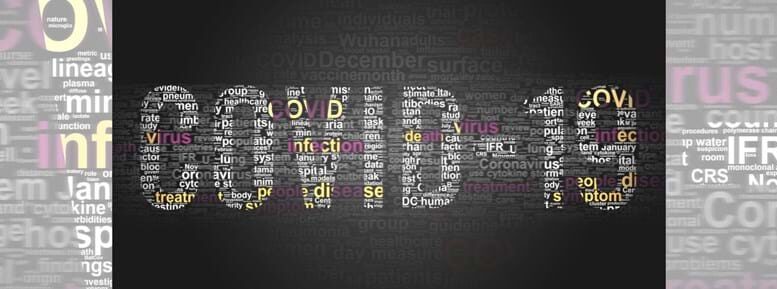Remember "Covidiots" and the first protests by "anti-vaxxers"? The early stages of the pandemic saw plenty of new words enter the public "voice" but many of these novel terms were actually fairly short-lived.
However, according to new research by Lancaster University linguists Dr. Luke Collins and professor Veronika Koller, some will be here to stay, such as "zoom fatigue," an effect of the increase in video-conferencing, and "lockdown."
In their new book Viral Language: Analyzing the Covid-19 pandemic in public discourse, Collins and Koller look at how language was used about and during the Covid-19 pandemic.
Across eight chapters, they demonstrate how experiences of health and illness can be shaped by political messaging, scientific research, news articles and advertising.
Examples include:
- Stay home, save lives: Health ministers in various English-speaking countries used Twitter/X as a broadcast medium to give direct, bite-sized advice to citizens.
- Many politicians declared ‘war’ on Covid, but another popular metaphor was that of journeys. For example: ‘we have come through the tunnel’. Politicians of all stripes used it to ensure compliance with lockdown and other measures and to emphasise togetherness.
- Scientific writing on Covid-19 featured some hyperbolic language. For example: ‘This is one of the most extensive datasets on individual transmission events’. This, say the researchers, suggests increasing competition among academics in the scientific effort to control the pandemic.
- Did politicians follow ‘the science’ or the scientists? British news media participated in a critical discussion of what ‘the science’ is and how it contributes to policymaking.
The book was inspired by the researchers wanting to find out how a globally disruptive crisis, such as the Covid-19 pandemic, leaves traces in the very way we speak and write.
After all, they say, language helps us make sense of events and influences how we experience them.
To investigate the language around Covid-19, Collins and Koller looked at a variety of sources, from large collections of scientific writing and news, which they analyzed with computer-assisted methods, to crowd-sourced examples, social media and advertising videos.
As Collins explains, “For the computer-assisted studies, we looked at 224 million words worth of scientific articles, 772 million words of news articles and 12,000 tweets.”
Koller adds, “The studies are of interest to anyone who wants to understand how the language of the news, politicians and advertising changed in reaction to the pandemic."
‘Viral Language’ is published by Routledge.
Source: Lancaster University
